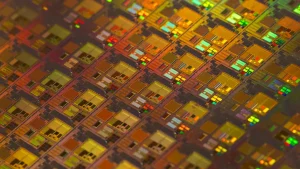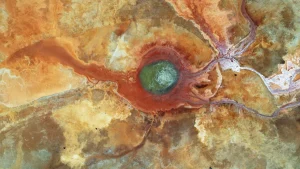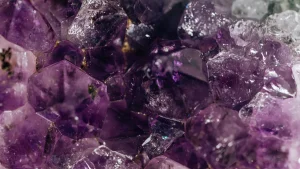
Vacuum furnace applications require materials capable of withstanding extreme temperatures while resisting oxidative damage. TaC-coated graphite components are highly effective in fulfilling these demands by forming a strong protective barrier against oxidation. The use of advanced technologies, including CVD TaC coating and SiC coating, significantly boosts their durability and thermal efficiency. These coatings, particularly CVD SiC coating, play a crucial role in maintaining the structural integrity of graphite in corrosive environments. By leveraging TaC coating and CVD TaC coating, industries can greatly enhance furnace performance and minimize operational downtime.
Key Takeaways
- TaC-coated graphite parts stop rusting, making them last longer.
- These coatings help parts stay strong in very hot places.
- TaC lets parts work well even above 3,000°C.
- Buying TaC-coated parts saves money by needing fewer repairs.
- Special methods like CVD make tough and long-lasting TaC coatings.
- Fields like space travel and nuclear power use these safer, better parts.
Oxidation Challenges in Vacuum Furnace Applications
Graphite’s Role in High-Temperature Furnaces
Graphite plays a pivotal role in vacuum furnace operations due to its exceptional thermal properties. It offers high thermal conductivity, enabling efficient heat management during processes that demand precise temperature control. Additionally, its ability to distribute heat uniformly ensures consistent performance across the furnace chamber. These characteristics make graphite indispensable for applications requiring temperatures as high as 1500°C, where material degradation or contamination must be avoided.
- High thermal conductivity ensures efficient heat management.
- Uniform heat distribution is vital for maintaining precise temperature control.
Why Oxidation is a Critical Issue
Oxidation poses a significant challenge in vacuum furnace environments, particularly for graphite components. When exposed to high temperatures, graphite reacts with oxygen, forming carbon dioxide or carbon monoxide. This reaction leads to material loss, compromising the structural integrity of furnace components. Uncoated graphite can experience up to 27% mass loss after 500 hours at 1800°C, as opposed to less than 5% for zirconium carbide-coated graphite. Such degradation not only reduces the lifespan of components but also impacts the furnace’s operational efficiency.
| Coating Type | Mass Loss After 500 Hours | Temperature (°C) |
|---|---|---|
| Zirconium Carbide Coated | < 5% | 1,800 |
| Uncoated Graphite | 27% | 1,800 |
Effects of Oxidation on Furnace Efficiency and Component Longevity
Oxidation directly affects furnace efficiency and the longevity of its components. As oxidizer gases reduce the flame zone temperature, the size of the high-temperature region shrinks, limiting heat transfer efficiency. This reduction impacts the melting rate and quality of processed materials. Furthermore, shorter minimum residence times can compromise the consistency of melting operations. Over time, these inefficiencies lead to increased maintenance costs and reduced productivity.
| Indicator | Effect on Efficiency and Longevity |
|---|---|
| Flame zone temperature | Decrease due to oxidizer gases, reducing thermal stress on materials |
| Size of high-temperature region | Reduction helps extend furnace lifespan |
| Heat transfer efficiency | Reduced due to smaller high-temperature areas affecting melting rate |
| Minimum residence time | Shortened, potentially impacting melting quality |
| Melting efficiency | Enhanced by oxy-fuel process but may affect fastest-moving particles |
TaC-Coated Graphite: The Science and Technology
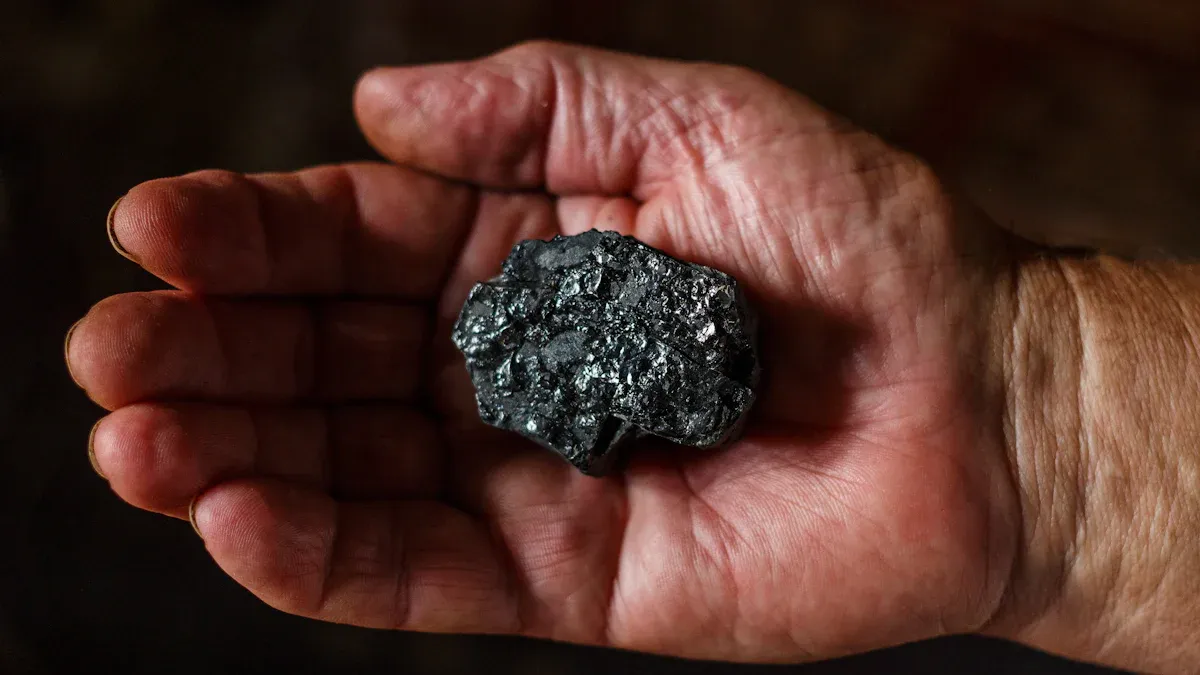
Properties of Tantalum Carbide (TaC)
Tantalum Carbide (TaC) is a ceramic material known for its exceptional physical and chemical properties, making it ideal for high-performance applications. Its unique characteristics include:
- Anomalous hardness: TaC exhibits remarkable hardness, as observed in indentation experiments. This property varies depending on the grain size and carbon content of the material.
- Dislocation behavior: Under indentation, TaC demonstrates resistance to dislocation slip, contributing to its hardness. However, nanocrystalline TaC films show reduced dislocation plasticity, which slightly diminishes this property.
- Thermal stability: TaC maintains its structural integrity under extreme temperatures, making it suitable for environments exceeding 3,000°C.
These properties enable TaC to withstand harsh conditions, ensuring durability and reliability in demanding applications.
How TaC Coatings Mitigate Oxidation
TaC coatings act as a protective barrier for graphite components, significantly reducing oxidation in high-temperature environments. Graphite, when exposed to oxygen at elevated temperatures, undergoes degradation, leading to material loss and reduced efficiency. TaC coatings address this issue by:
- Preventing direct contact between graphite and oxygen, thereby minimizing oxidation.
- Enhancing the safety and efficiency of applications, such as those in nuclear technology, by protecting graphite parts from degradation.
- Extending the lifespan of graphite components, ensuring consistent performance in demanding conditions.
| Evidence Description | Impact on Oxidation in Graphite Components |
|---|---|
| Graphite can oxidize when exposed to high temperatures, leading to material degradation. | TaC coatings provide protection against oxidation in high-temperature environments. |
| TaC coatings protect graphite parts from oxidation and degradation. | Enhances safety and efficiency in applications like nuclear technology. |
| Applying TaC coatings significantly improves the performance of graphite components. | Ensures longevity and reliability in demanding applications. |
By mitigating oxidation, TaC coatings enhance the operational efficiency and reliability of vacuum furnaces.
Application Methods for TaC Coatings
The application of TaC coatings involves advanced techniques that ensure uniformity, adhesion, and durability. Among these methods, the Chemical Vapor Deposition (CVD) technique stands out due to its efficiency and precision. Key advancements in TaC coating processes include:
- CVD Technique: This method achieves high deposition rates and excellent adhesion, making it suitable for high-stress applications like aerospace and cutting tools.
- Nanostructuring Developments: Innovations in nanostructuring have improved the hardness and thermal stability of TaC coatings, enabling them to perform effectively under extreme conditions.
- Environmental Considerations: The adoption of eco-friendly coating methods has expanded the application of TaC coatings while reducing their environmental impact.
These advancements ensure that TaC-coated graphite components meet the rigorous demands of modern industries, providing superior performance and longevity.
Advantages of TaC-Coated Graphite Components
Enhanced Resistance to Oxidation
TaC-coated graphite components provide exceptional resistance to oxidation, a critical factor in high-temperature environments. The tantalum carbide coating acts as a robust barrier, preventing oxygen from reacting with the graphite substrate. This protection minimizes material degradation, ensuring the structural integrity of components over extended periods. Industries that rely on vacuum furnaces benefit significantly from this enhanced resistance, as it reduces the frequency of component replacement and maintenance.
The superior oxidation resistance of TaC coatings also contributes to improved safety in applications where material failure could lead to catastrophic outcomes. By shielding graphite from oxidative damage, these coatings ensure consistent performance even under extreme operating conditions. This makes them an indispensable choice for industries such as aerospace, nuclear technology, and advanced manufacturing.
Improved Thermal Stability in Extreme Conditions
TaC-coated graphite components exhibit remarkable thermal stability, enabling them to perform reliably in extreme conditions. Performance trials have demonstrated that these coatings significantly reduce material degradation compared to conventional alternatives.
| Coating Type | Mass Loss after 50 Cycles | Temperature (°C) | Degradation Rate Comparison |
|---|---|---|---|
| TaC Coating | < 0.5% | 1,650 | Less than 1/3 of SiC coatings |
| Conventional SiC Coating | 3-4 times faster | 1,650 | Higher degradation rate |
This data highlights the superior durability of TaC coatings, which maintain their protective properties even after repeated thermal cycling. Furthermore, microballistic impact testing has revealed that materials coated with tantalum carbide retain their strength at elevated temperatures. For instance, copper components demonstrated a 30% increase in strength when the temperature rose by 157°C, contrary to the typical softening behavior of most materials. This evidence underscores the ability of TaC coatings to enhance the thermal performance of graphite components, ensuring reliability in demanding applications.
Cost Savings Through Extended Component Lifespan
The longevity of TaC-coated graphite components translates directly into cost savings for industries. These coatings exhibit exceptional wear and corrosion resistance, protecting components from friction, oxidation, and chemical exposure. This durability reduces the need for frequent replacements, lowering operational costs over time.
Tantalum carbide coatings also enhance the mechanical and thermal properties of graphite, making them suitable for high-stress environments such as aerospace and heat treatment processes. Their ability to endure extreme temperatures without significant degradation ensures that components remain functional for extended periods. This reliability minimizes downtime and maintenance expenses, further contributing to cost efficiency.
By investing in TaC-coated graphite components, industries can achieve a balance between performance and cost-effectiveness. The extended lifespan of these components not only reduces expenses but also enhances the overall productivity of operations.
Industrial Applications of TaC-Coated Graphite Components
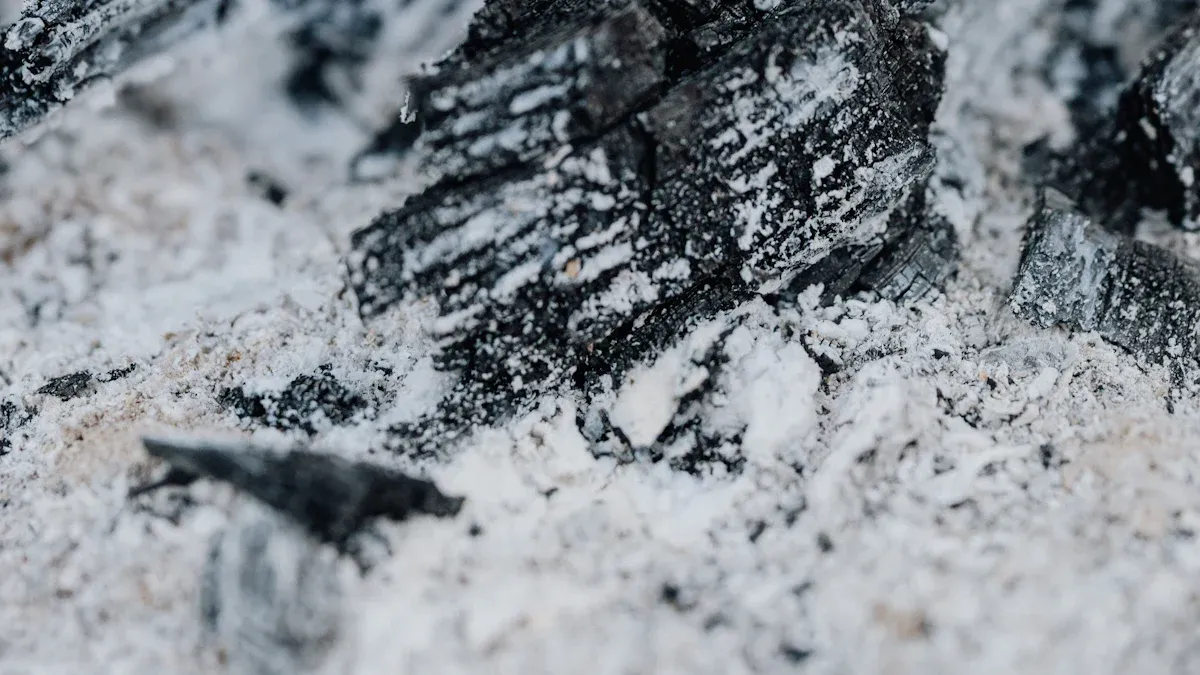
Heat Treatment and Brazing Processes
Heat treatment and brazing processes demand materials that can endure extreme temperatures and maintain structural integrity. TaC-coated graphite components excel in these applications due to their exceptional thermal stability and resistance to oxidation. In heat treatment, these components ensure uniform temperature distribution, which is critical for achieving consistent material properties. Brazing processes benefit from the non-reactive nature of TaC coatings, which prevent contamination of the joint area. This reliability enhances the quality of the final product while reducing the risk of defects. Industries such as aerospace and automotive manufacturing rely on these components to meet stringent performance standards.
Sintering and Silicon Crystal Growth Furnaces
Sintering and silicon crystal growth furnaces operate under extreme conditions, where material purity and durability are paramount. TaC-coated graphite components play a vital role in these environments by offering superior resistance to chemical corrosion and thermal degradation. Their ability to withstand temperatures above 2000°C ensures stable performance during prolonged operations.
The benefits of using TaC-coated components in these applications are summarized below:
| Application Type | Benefit Description |
|---|---|
| SiC Crystal Growth | TaC coatings improve the purity and quality of SiC crystals grown in PVT methods. |
| Resistance to Chemical Corrosion | TaC can resist chemical corrosion by acids, alkalis, NH3, H2, and Si vapor, enhancing durability. |
| Thermal Stability | TaC-coated components can operate stably above 2000°C, ensuring reliability in high-temperature processes. |
| Defect Density Reduction | Use of TaC-coated components leads to significantly reduced defect densities in SiC crystals. |
| Carbon Particle Filtration | Porous TaC or TaC-coated porous graphite filters carbon particles, preventing them from diffusing into the crystal. |
| Crucible Wall Protection | TaC-coated rings and flow guides isolate Si vapor from the graphite crucible wall, preventing corrosion. |
These advantages make TaC-coated graphite components indispensable for producing high-quality silicon carbide crystals and other advanced materials.
Advanced Manufacturing and Emerging Technologies
Advanced manufacturing and emerging technologies require materials that can perform reliably in cutting-edge applications. TaC-coated graphite components meet these demands by combining durability, thermal stability, and chemical resistance. In additive manufacturing, these components support processes like powder metallurgy and 3D printing, where precise temperature control is essential. Emerging technologies, such as quantum computing and semiconductor fabrication, also benefit from the high purity and performance of TaC-coated materials. By enabling innovation in these fields, these components contribute to the development of next-generation technologies.
Selecting TaC-Coated Graphite Components for Your Needs
Key Considerations for Component Selection
Selecting the right TaC-Coated graphite components requires evaluating several performance indicators to ensure compatibility with specific operational needs. Each application has unique demands, making it essential to prioritize factors such as thermal stability, corrosion resistance, and longevity.
| Performance Indicator | Description |
|---|---|
| Thermal Stability | Essential for maintaining performance under high temperatures, crucial for renewable energy systems. |
| Corrosion Resistance | Important for longevity in harsh environments, particularly in wind energy and hydrogen systems. |
| Longevity | Extends the lifespan of components, reducing maintenance costs and improving efficiency in applications. |
Thermal stability ensures that components perform reliably under extreme temperatures, a critical requirement for industries like aerospace and renewable energy. Corrosion resistance protects components from chemical degradation, especially in environments exposed to hydrogen or other reactive gases. Longevity reduces the frequency of replacements, minimizing downtime and operational costs. By carefully assessing these indicators, industries can select components that align with their performance and durability requirements.
Ensuring Quality Through Trusted Suppliers
Partnering with trusted suppliers is vital for obtaining high-quality TaC-Coated graphite components. Reputable manufacturers adhere to stringent quality control standards, ensuring that their products meet industry specifications. They also provide detailed documentation, including material certifications and performance data, which helps buyers verify the reliability of the components.
Suppliers with a proven track record often offer technical support, assisting clients in selecting the most suitable components for their applications. This guidance ensures that the chosen materials deliver optimal performance in demanding environments. Additionally, trusted suppliers invest in research and development, continuously improving their products to meet evolving industry needs.
When evaluating suppliers, industries should consider factors such as production capabilities, customer reviews, and compliance with international standards. Selecting a reliable supplier not only guarantees product quality but also fosters long-term partnerships that drive operational success.
TaC-coated graphite components offer a groundbreaking solution to oxidation challenges in vacuum furnace applications. Their superior oxidation resistance and unmatched thermal stability make them essential for industries that demand high-performance materials. These components not only enhance operational efficiency but also reduce downtime and extend equipment lifespan. By adopting this advanced technology, businesses can achieve long-term cost savings and improved productivity.
Investing in TaC-coated graphite components ensures reliable performance in even the most demanding environments, making them a valuable asset for modern industries.
FAQ
What makes TaC-coated graphite components superior to uncoated graphite?
TaC-coated graphite components resist oxidation and thermal degradation, ensuring longer lifespans and consistent performance. The tantalum carbide coating acts as a protective barrier, preventing oxygen exposure and material loss. This advantage makes them ideal for high-temperature applications.
Can TaC-coated graphite components be used in extreme environments?
Yes, TaC-coated graphite components perform reliably in extreme environments. Their thermal stability exceeds 3,000°C, and they resist chemical corrosion from acids, alkalis, and reactive gases. These properties make them suitable for demanding industries like aerospace and semiconductor manufacturing.
How does the CVD method improve TaC coating quality?
The Chemical Vapor Deposition (CVD) method ensures uniform coating thickness and strong adhesion. This precision enhances the durability and performance of TaC-coated graphite components, making them effective in high-stress applications such as heat treatment and brazing processes.
Are TaC-coated graphite components cost-effective?
TaC-coated graphite components reduce operational costs by extending the lifespan of furnace parts. Their resistance to wear and oxidation minimizes maintenance and replacement needs, resulting in long-term savings for industries relying on vacuum furnaces.
What industries benefit most from TaC-coated graphite components?
Industries like aerospace, nuclear technology, and advanced manufacturing benefit significantly. These components ensure reliable performance in heat treatment, silicon crystal growth, and emerging technologies, where high thermal stability and oxidation resistance are critical.

